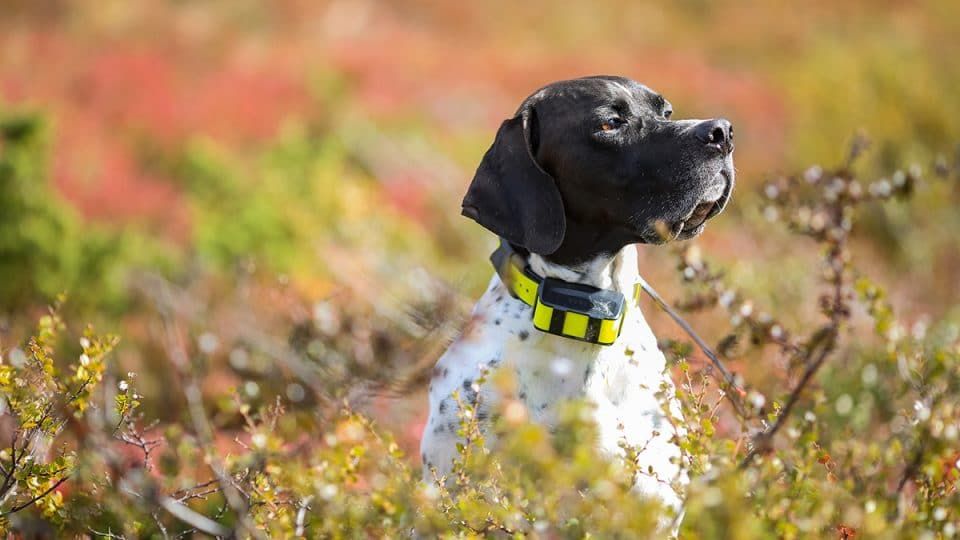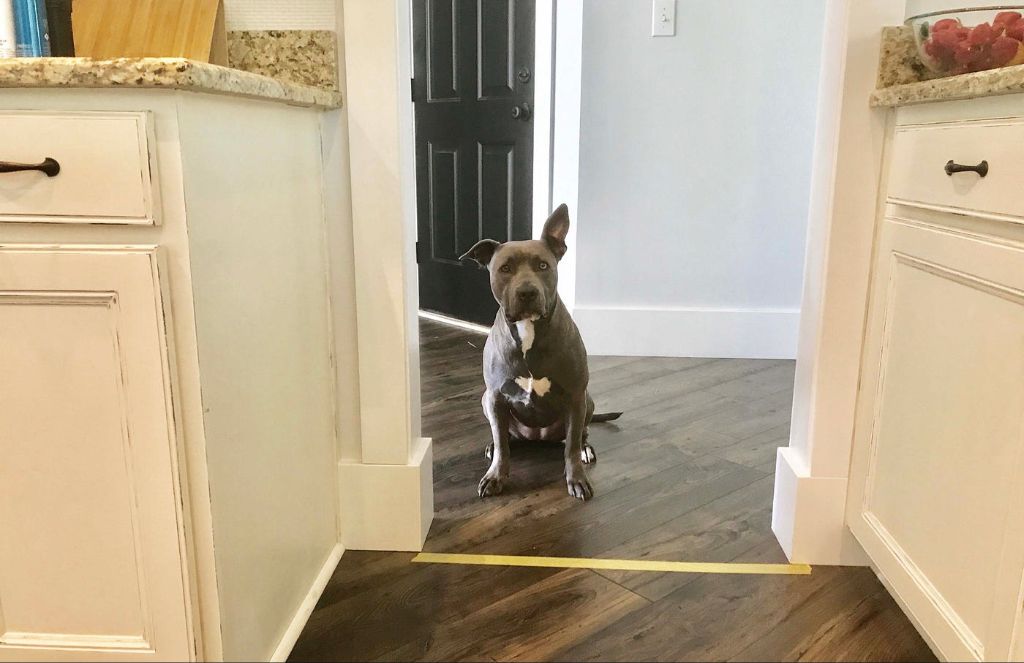Introduction
A GPS wireless dog fence is an innovative system that allows you to create a virtual boundary for your dog without installing any wires. It works by having your dog wear a special GPS-enabled collar that communicates with a base station installed in your home. When your dog approaches the perimeter you set, the collar will first give a warning beep, then deliver a safe static correction to deter them from leaving the designated area.
The GPS collar determines your dog’s location using satellites, then compares that to the digital fence boundary you mapped out. This allows you to customize the shape and size of your fence wirelessly. The system is portable too, so you can take the base station and collar with you when traveling or visiting friends’ houses to maintain the consistency your dog needs.
Unlike traditional underground wired systems, a wireless GPS fence doesn’t require any digging or installation of wires. It provides complete freedom to create any virtual boundaries you choose for your property.
Benefits of a Wireless Fence
Unlike traditional wired fences, GPS wireless fences allow your dog some freedom while still keeping them within a defined boundary. With a traditional physical fence, your dog is confined to your yard and cannot explore. But with a wireless fence, you set a perimeter that allows your dog to roam within the set distance while getting alerts if they wander too far (https://www.dogwatch.com/dogwatch-blog/do-gps-dog-fences-actually-work-heres-everything-you-need-to-know/).
Also, with a physical fence, you have an eyesore that blocks views and landscapes your yard. But a wireless fence is invisible, utilizing GPS tracking to keep your dog safely contained without ruining your curb appeal. This gives your dog space to play and roam while keeping your yard pristine (https://mypetcommand.com/blogs/news/traditional-wired-dog-fences-vs-gps-wireless-dog-fence).
Overall, a wireless GPS fence provides more freedom for both you and your dog. Your dog gains a wider area to explore and play, while you gain an obstruction-free yard without sacrificing your dog’s safety.
Considerations for Small Dogs
When choosing a GPS wireless fence for a small dog, there are a few important considerations to keep in mind:

Range – Small dogs generally do not roam as far as larger breeds, so a shorter range may be suitable. Many GPS wireless fences have adjustable ranges from 100-200 feet up to 1/2 acre. Choose a range based on your property size and your dog’s typical roaming habits.
Size of collar – The collar should be lightweight and properly fitted to your small dog. A too-heavy or ill-fitting collar can be uncomfortable. Look for products designed specifically for pets under 15 lbs. For instance, the Tubbs Road GPS Pet Fencing System 1 recommends its collar for dogs from 5-15 lbs.
Retrieval if cross boundary – Small dogs can slip through boundary areas more easily. Look for collars that provide an audible warning tone when your dog reaches the boundary, allowing you to retrieve them before they cross. The SportDOG Brand In-Ground Fence Systems2 offers this feature.
By selecting a GPS wireless fence designed for small dogs, you can help keep your petite pup safely contained.
Top GPS Wireless Fences for Small Dogs
When choosing a GPS wireless fence for a small dog, key factors to consider are size of the collar, range, customization, and price. Here are some top options:
Halo Collar 2+
The Halo Collar 2+ is an excellent GPS wireless fence for small dogs under 30 lbs. It has a lightweight, waterproof collar and a range up to two acres. You can create unlimited custom geofences and track your dog’s location and activity through the app. Priced under $200.
SportDOG In-Ground Fence System
The SportDOG In-Ground Fence System is customizable for dogs as small as 5 lbs. It covers up to 105 acres and includes wire for in-ground installation. Priced around $250.
PetSafe Stay & Play Wireless Fence
The PetSafe Stay & Play is a simple, affordable option starting at $120. It covers up to 3/4 acre and has a small, lightweight collar for dogs 5 lbs and up. Customizable through the app.
Based on size, range, and price, the Halo Collar 2+ stands out as a top choice GPS wireless fence for small dogs.

Collar and Receiver
The collar and receiver are the most important components of a GPS wireless fence for small dogs. Proper fit and comfort are crucial, as a loose or uncomfortable collar can lead to escape and injury risks. According to experts, the collar should fit snugly without restricting breathing or movement when properly fastened (Quora, 2023).
Look for a lightweight, adjustable collar designed specifically for small dogs. Features like rounded edges and surgical-grade stainless steel contacts help prevent irritation. Waterproof receivers are ideal for comfort and durability during outdoor play. Consider safety features like an auto-shutoff to preserve battery life and prevent overcorrection.
While prong and shock collars may seem tempting for training small dogs, most experts advise against their use, as they can cause injury or trauma in petite breeds. Instead, look for collars that use tone or vibration to mark boundary lines. This provides a humane yet effective training method for your small dog’s wireless fence.
Boundary Areas and Customization
When setting up the boundary area for a GPS wireless fence system with a small dog, it’s important to consider their size and activity levels. Small dogs generally require a smaller boundary area than larger, more active breeds. According to a PetSafe video on boundary setup [1], the ideal boundary size for a small dog is around 1/4 acre. This allows enough room for exercise and playtime without being too large for a small dog to patrol.
The shape of the boundary area is also important. Long, narrow boundary shapes work better than wide open spaces for small dogs. This prevents them from building up too much speed and momentum before getting the correction signal from crossing the boundary line. Keeping boundary areas closer to the home is also recommended. This allows small dogs to always have a safe place nearby to retreat if needed.
When customizing the boundary, make gradual turns instead of sharp 90-degree angles. Curved or rounded corners are safer by eliminating sharp corners that small dogs could accidentally run around and out of the boundary area. Install boundary flags frequently, at least every 10 feet, to give highly visible reminders of the boundary line for small dogs.
Installation and Training
Setting up a wireless GPS dog fence requires installing the transmitter and laying out the boundary wire around the perimeter you want to contain your dog. It’s crucial to properly set up the system and train your dog on the new boundaries to ensure they work effectively.
According to Halo Collar, the typical process involves:
- Installing the wireless transmitter and charging the collar receiver.
- Laying out the boundary wire using training flags to map the boundary area.
- Connecting and synchronizing the collar receiver with the transmitter.
- Fitting the collar properly on your dog’s neck.
- Setting the boundary width and collar static correction level.
- Training your dog on the boundary using positive reinforcement techniques.
It’s crucial to be patient and consistent while training your dog on the new boundary system. As explained in this training video, work in small increments and reward your dog for responding properly to the collar stimulus. With time and consistency, your dog will learn the new boundaries and respect the fence perimeter.

Ongoing maintenance like testing the collar and checking the battery level can help the system work consistently. But proper installation combined with patient, rewards-based training provides the best foundation for wireless fence effectiveness with small dogs.
Troubleshooting and Maintenance
As with any electronic system, occasional issues may arise with your GPS wireless fence. Here are some common troubleshooting tips:
If your dog’s collar is not beeping or administering a correction, first check that the battery is installed properly and has a full charge. PetSafe recommends replacing the proprietary battery every 3-6 months depending on usage [1]. Follow any included instructions to properly replace the battery.
You may need to sync your collar to the transmitter if the devices seem unable to communicate. Refer to your product’s manual for syncing instructions. Usually this involves holding the collar near the transmitter and pressing a sync button on both units [2].
Check that the boundary areas are set up correctly in your transmitter interface. Adjust as needed to ensure full coverage where desired. Test the collar at various points on your property to check for reception.
Consult your fence manual or the manufacturer’s website for additional troubleshooting tips. Maintaining your system properly will allow your wireless fence to keep your small dog safely contained.
Additional Accessories
While a GPS wireless dog fence system comes with the basic components needed, there are additional accessories available to enhance functionality:
Additional collars allow you to contain multiple dogs within the boundary area. Most systems support two or more collars, so you can create a wireless fence for all your dogs with one kit. Extra collars can be purchased separately.
Indoor boundary pods can be used to prevent dogs from entering or exiting certain rooms. Place the pod at doorways or other off-limit areas, and the dog’s collar will beep when they get close, teaching them to avoid those zones. This adds flexibility beyond the outdoor circular boundary.
Replacement collars are useful in case of any damage, loss, or just general wear and tear over time. Having spare collars ensures you can continue using the system uninterrupted.
Battery chargers make it easy to simultaneously charge multiple collars. This saves time compared to charging one at a time.

Additional boundary wire can extend the fenced area if needed. Extra wire paired with more boundary posts allows covering larger spaces.
Cases and holsters provide safe storage and transport of system components while traveling or during storage. Look for durable, water-resistant materials.
Conclusion
A GPS wireless fence is a great solution for containing small dogs within a safe space outdoors. Compared to traditional wired fences, a GPS wireless system is often easier and quicker to install, allowing you to customize boundary areas. This flexibility lets you create spaces tailored to your small dog’s needs.
The key benefits of a wireless fence for small dogs include keeping them safely contained, allowing for more exercise and playtime outdoors, and preventing escapes. With features like adjustable correction levels, small and lightweight collars, and portable boundary pods, wireless fences are designed with small dogs in mind.
By choosing a reliable brand and taking the time to properly introduce your dog to the collar and boundaries, a GPS wireless fence can provide you and your small dog with peace of mind. With supervision and positive training methods, your dog can enjoy your yard to the fullest while staying secure.
